By Dave McCracken General Manager
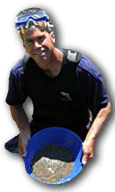
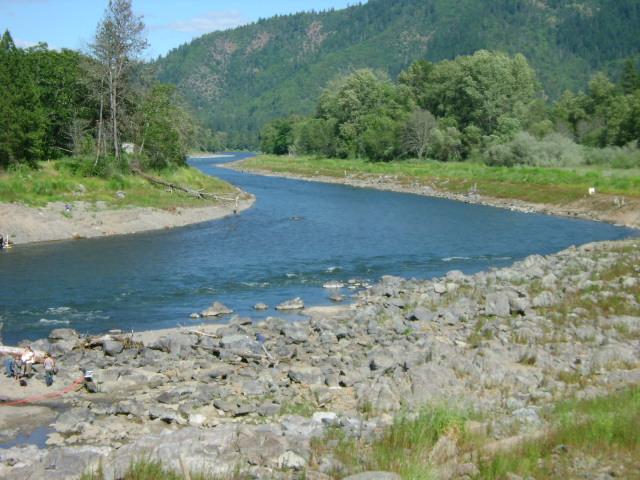
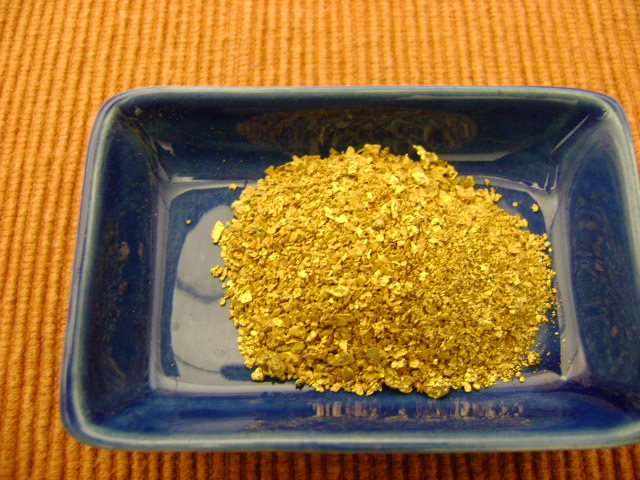
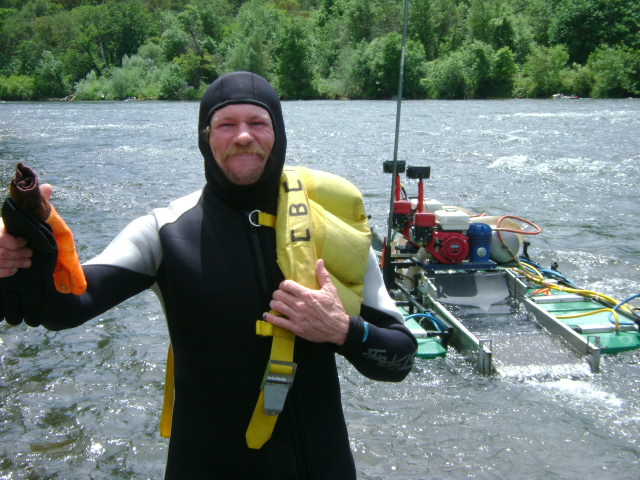
Note: Oregon Now Has Placed a Moratorium on Motorized Prospecting!
We decided quite some time ago that as long as things are running smoothly in Happy Camp, our field staff (Richard Krimm, Ray Koons and others) would be overseeing activity this season along our mining properties on the Klamath River, while Craig Colt and I provide help and encouragement to members who want to dredge for gold along the Rogue River in Southern Oregon.
We have maps and an Access Guide on line for all members who wish to suction dredge along the Rogue River. Members are also invited to contact our office for more information.
We struck high-grade gold during a dredge sampling project along the Rogue River last fall. So we have been planning to support our members who wish to operate your dredges over there however long the dredging moratorium remains in affect in California (at least though the present season).
One of the best ways I know of to encourage our members is to take a dredge out on the river and start sampling for high-grade gold deposits. Since most gold follows along a common, narrow path in the river, once high-grade is established in one place, we can begin lining other members up to get a piece of it. Then, as other members start finding acceptable levels of gold (or better), everyone becomes encouraged.
When Craig and I started, there were already several members dredging in the section of river that we had targeted downstream of the Gold Ray dam. Some of them were already dredging some high-grade gold, amazingly on both sides of the river and also out in the middle. This made things a lot easier for Craig and I. Usually we are the ones who have to go out and make the first strike!
Using my jet boat to gain access to the far side of the river, Craig and I initially launched a 4-inch dredge about 100 feet downstream of where one member (Tom) was already dredging about a quarter-ounce of gold per day. Whenever possible, we try and learn as much as possible from someone who is already into high-grade gold. The information tells us exactly what we should be looking for in our own sampling. Tom was getting some nice nuggets off the bedrock, under about a foot of an orange-colored hard-packed streambed which also contained lots of fine gold. Easy dredging!
Here is a video sequence that was taken while Craig and I were talking to the guys dredging just up in front of us:
The problem was that the river was running faster down below Tom. With Craig holding the 4-inch dredge out into the river for me, it was everything I could do to hold a position out in the river to dredge a sample. The water was only a few feet deep, so it was not dangerous. It was just hard to hold a position against the fast flow. There were several hundred feet of very fast water here; and I was betting that because other sections of the river are so much easier to work, nobody had ever dredged this area before.
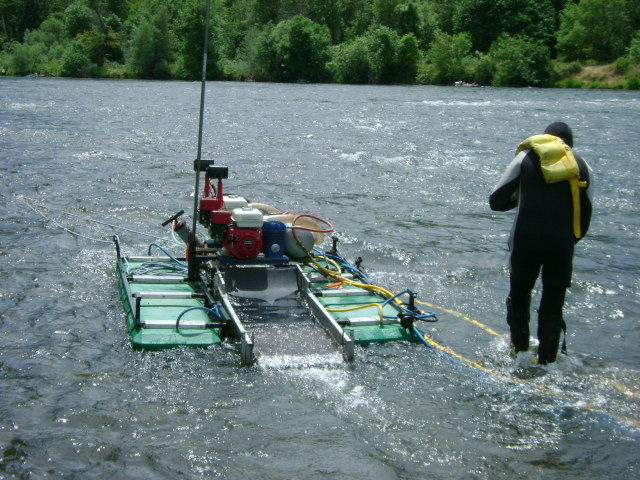 It turned out that I was right about that. I found the orange-colored hard-pack as soon as I started dredging material into the 4-inch nozzle. I reached bedrock within just a short time. The material was less than a foot deep. Easy!
It turned out that I was right about that. I found the orange-colored hard-pack as soon as I started dredging material into the 4-inch nozzle. I reached bedrock within just a short time. The material was less than a foot deep. Easy!
Slowing down on the bedrock to have a more careful look, I started spotting occasional flakes of gold right away. It is always so uplifting when you start seeing gold while dredging. If you are seeing the gold, it means you are on the common gold path. Individual pieces can be followed into pockets of gold when the bedrock is right. Tom told us he had uncovered multiple pockets of beautiful nuggets just the day before.
I didn’t see any pockets of gold while spending about an hour getting a sizable section of the bedrock uncovered. But I did see sporadic flakes of gold along the bedrock surface. It really cuts into how much you can accomplish if you slow down too much to look for the gold. So once I established that there was gold present, but not in pockets, I mainly focused on getting as much volume sucked up as possible so I could complete a good sample.
When we looked into the sluice box afterwards, we were amazed to see that it was laced thick with thousands and thousands of small flakes of gold. We were into high-grade gold on the first try; unbelievable! Since there was so much more gold in the sluice than what I saw underwater, it was clear that most of the gold is concentrated inside of the orange layer of hard-packed streambed. This was good; because it means that the gold deposit is not depending upon bedrock conditions. I have found many times in the past that concentrations of fine gold in a pay-layer tend to be very consistent.
The following video segment captured all the excitement we
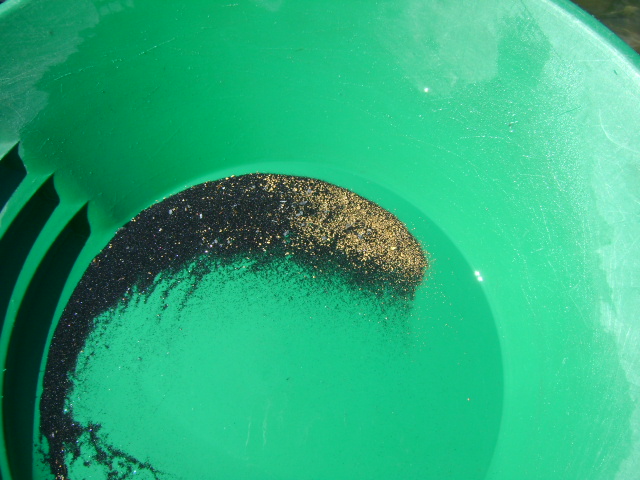 were experiencing when we performed the first clean-up on the dredge:
were experiencing when we performed the first clean-up on the dredge:
Our next step was to assemble and float my 5-inch dredge to the location. In anticipation of the potential new DEQ regulations, Craig had already welded a 4-inch ring onto the nozzle. Once we moved the larger dredge onto the far side of the river, we decided to drop further back on this pay-streak and see if we could pick up the same paying orange layer. The water was just as fast back there, so Craig was mainly supporting my samples by holding the dredge out into the current. This was so I could dredge further out in the river. We found the paying layer as we dropped further back two more times on the pay-streak. Wow!
Craig and I were really excited! Here follows a video sequence Craig filmed with my explanation about how we were figuring things out:
Here is a look at the 5-inch dredge operating on the river as we were doing the sampling. The water in the video doesn’t look nearly as fast as it felt when we were doing the work!
Since we were spreading the news to other members about what we were finding, those with boats began moving their own dredges over and setting up in the slower water well up in front of us, but in line on the river with where we were finding our gold. Those guys also immediately started finding the shallow layer of orange-pack with fine gold. They also started picking up pockets of nuggets in the bedrock. The nuggets are getting bigger as members establish the paying line further upstream. One member was picking up pennyweight-sized nuggets when I talked to him a few days ago.
Here follows some of Danny’s explanations of how things are going on the river:
This is all directly in line with where we established high-grade gold last fall, perhaps 500 yards further upstream. This is a very large river, and there is a lot of room!
Craig and I have since set up our two dredges side-by-side and are working the deposit in a friendly competitive fashion, seeing who can get the most gold. I recovered an ounce of fine-sized flakes the other day in less than three hours of running. Back during my younger years, I might not have been so enthusiastic about recovering an ounce of gold. But at today’s value, an ounce per day is something to get excited about!
Here is a video sequence we filmed just as we completed the clean-up on my 5-incher several days ago:
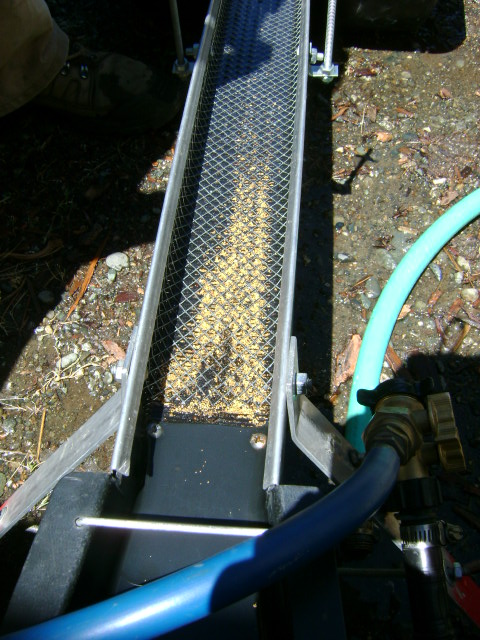 Other members have established a completely separate line of gold on the access-side of the river, and another line out in the middle of the river. I gather the reason there is more than one gold line is that there are multiple sources of gold entering the river just upstream. One of our members working the access-side of the river showed me a bottle of beautiful nuggets which even has me rethinking the plans for where I will operate my 5-inch dredge!
Other members have established a completely separate line of gold on the access-side of the river, and another line out in the middle of the river. I gather the reason there is more than one gold line is that there are multiple sources of gold entering the river just upstream. One of our members working the access-side of the river showed me a bottle of beautiful nuggets which even has me rethinking the plans for where I will operate my 5-inch dredge!
One member (Danny) who is doing really well with his 4-inch dredge up in front of where Craig and I have been dredging says that his dad is doing even better than he is just using a 3-inch high-banker. His dad is mining about 3 miles downriver from where we are, using the suction nozzle to suck up material from the bottom near the river’s edge. He is getting nice nuggets, too. Here is what Danny had to say:
I have been too busy over the past week trying to establish and confirm high-grade to drive around to all the river access points and see how other members are doing along the Rogue River. I hope to have a report for you guys in next month’s newsletter about that.
What I can tell you at this point is that there is definitely high-grade gold to be had by dredging on the Rogue River. I can tell you that so far, everything we have seen involves shallow streambed material to the pay-layer, and that it is pretty easy going. We have quite a few happy members over there.
- Here is a link to more information about the 40 miles of river that is available to members.
- Here is a link to a map which shows where we have located free access to the river.
- More Gold Mining Adventures





